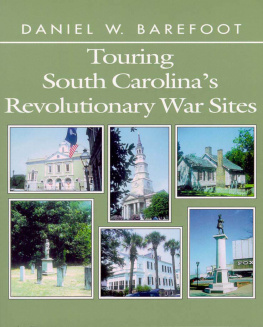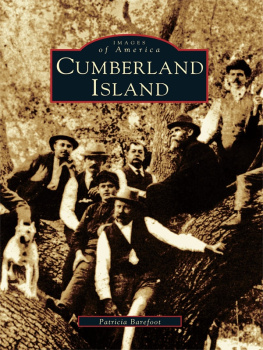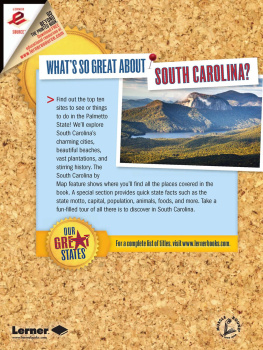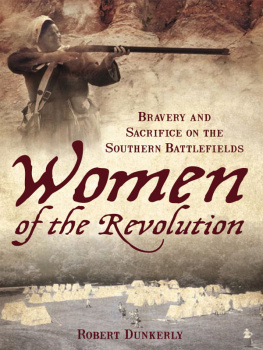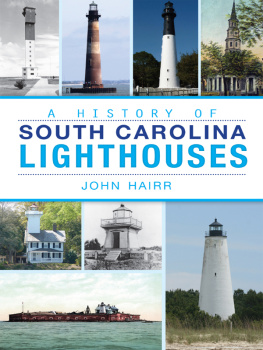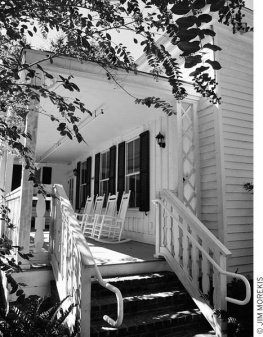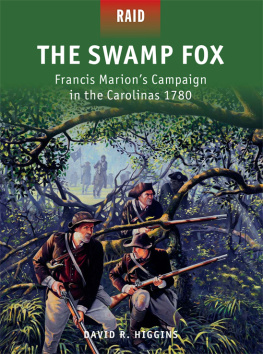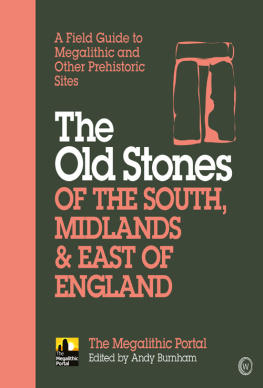
ALSO BY DANIEL W. BAREFOOT
Touring North Carolinas Revolutionary War Sites
Touring the Backroads of North Carolinas Upper Coast
Touring the Backroads of North Carolinas Lower Coast
General Robert F. Hoke: Lees Modest Warrior
OTHER TITLES IN JOHN F. BLAIRS TOURING THE BACKROADS SERIES
Touring the Backroads of North and South Georgia by Victoria and Frank Logue
Touring the Coastal Georgia Backroads by Nancy Rhyne
Touring the Coastal South Carolina Backroads by Nancy Rhyne
Touring the Middle Tennessee Backroads by Robert Brandt
Touring the East Tennessee Backroads by Carolyn Sakowski
Touring the Western North Carolina Backroads by Carolyn Sakowski
Touring the Shenandoah Valley Backroads by Andrea Sutcliffe
Touring the Carolinas Civil War Sites by Clint Johnson
Touring Virginias and West Virginias Civil War Sites by Clint Johnson

Copyright 1999 by Daniel W. Barefoot
All Rights Reserved under International and Pan-American Copyright Conventions
BOOK DESIGN BY DEBRA LONG HAMPTON
PHOTOGRAPHS BY THE AUTHOR UNLESS OTHERWISE NOTED
The paper in this book meets the guidelines
for permanence and durability of the
Committee on Production Guidelines for
Book Longevity of the Council on Library Resources.
Photographs on front cover clockwise from top left
Old Exchange Building, Charleston
St. Philips Episcopal Church, Charleston
Historic Brattonsville
Monument to Elizabeth Jackson, Waxhaw
William Washington House, Charleston
Monument to General Daniel Morgan, Spartanburg
Library of Congress Cataloging-in-Publication Data
Barefoot, Daniel W., 1951
Touring South Carolinas Revolutionary War sites / Daniel W. Barefoot.
p. cm.
Includes bibliographical references (p. ) and index.
ISBN 0-89587-182-3 (alk. paper)
1. South CarolinaHistoryRevolution, 17751783Battlefields Guidebooks.
2. South CarolinaHistoryRevolution, 17751783Monuments Guidebooks.
3. Historic sitesSouth Carolina Guidebooks.
4. South Carolina Tours. 5. United StatesHistoryRevolution, 17751783Monuments Guidebooks.
6. United StatesHistoryRevolution, 17751783Monuments Guidebooks.
I. Title.
E263.S7 B37 1999
973.3'09757dc2199-33338
T o Kay and Kris,
for all the thousands of miles of fun,
excitement, and love weved shared.
Contents
Dont let liberty expire with me.
Sergeant James McDonald, seconds before he died from wounds suffered on June 28, 1776, while defending Fort Moultrie from British attack
MORE THAN FORTY YEARS have passed since my first visit to a battleground of the Revolutionary War. But I still vividly recall the deep sense of patriotism and pride I felt when, as a seven-year-old boy, I walked the very slope at Kings Mountain where Americans from the back country of the Carolinas and Virginia dealt Patrick Ferguson and the British a staggering defeat in 1780. Little did I imagine that I would one day live on the very street where, less than four months before Kings Mountain, Patriots won the Battle of Ramsours Mill in the city and county named for the American general who surrendered Charleston in 1780 and then personally accepted the British sword at Yorktown a year later.
Few periods in the United States history spark more interest than the Revolution. The story of how thirteen diverse colonies were able to band together to defeat an invading army of the best soldiers in the world serves to inspire people around the globe more than two hundred years later. That the same thirteen free and independent states were able to unite in the wake of the grim, bloody, and often internally divisive struggle to craft a republic that has become the marvel of the ages was no less a miracle.
Over the decadesindeed, the centuriessince the Revolution, historians have come to realize that the war for independence was won in the South. And it can be argued that to achieve the victory, no colony paid a higher price than South Carolina. During Americas bicentennial, South Carolinians coined the slogan Battleground of Freedom for their state because of its longstanding claim to have been the site of more action than any other colony. More than two hundred battles and skirmishes took place on South Carolina soil.
Much like General Benjamin Lincoln, the officer whose spirits sagged with the surrender at Charleston and soared with the victory at Yorktown, South Carolina was the epitome of the shifting American fortunes throughout the struggle. Just a week before the Declaration of Independence, South Carolina Patriots won a pivotal victoryone of the first in the Southat Sullivans Island overlooking Charleston Harbor. But almost four years later, Charleston, one of the most important ports in America, fell; soon thereafter, much of South Carolina was overrun by British troops. As the spring of 1780 gave way to summer, the tide of the war reached its lowest ebb for the American cause. That August, American forces suffered what some consider their worst defeat in any war, at Camden. But suddenly, at Kings Mountain a scant two months later, frontier Patriots claimed a victory that shifted the tide in favor of independence. Then, at the Battle of Cowpens in January 1781, Daniel Morgan masterminded a triumph over Banastre Tarleton that put Lord Charles Cornwallis on the road out of South Carolina through North Carolina and into Virginia to his rendezvous with destiny at a place called Yorktown.
Throughout the long fight for independence, several South Carolina partisan leaders stood out as men of courage and patriotism. America produced no greater legends during the Revolutionary War than General Francis Marion (the Swamp Fox) and General Thomas Sumter (the Gamecock).
This book was written to tell the story of South Carolina in the American Revolution at the places where famous (and infamous) events occurredat the homes of the participants, on the ground where Americans fought other Americans and the British to earn the right of self-determination, at the graves of men and women who sacrificed all they had for a cause they believed was right.
The twenty-one tours are arranged geographically rather than chronologically, since most areas of the state were the scene of events throughout the war. For example, Charleston Harbor was witness to that crucial American victory just days before the Declaration and to the mass exodus of British troops from South Carolina in the latter part of 1782.
From northeastern South Carolina, the tours make their way down the historic coast, then turn inland along the Savannah River and through the mountains, foothills, and Piedmont before ending in Columbia, the place selected as the capital of the independent state of South Carolina in the wake of the Revolution. Each of the tours is designed to be completed in a day.
More than 216 years have elapsed since the war ended, and it is logical to assume that few of the sites from that ancient conflict survive. Sadly, fires, storms, neglect, development, and vandalism have all robbed South Carolina of its Revolutionary War landmarks. As I traveled the Palmetto State while working on this project, I looked with great sadness at sites that have suffered desecration or are threatened by development. Immediate preservation efforts are needed if these priceless pieces of history are to be salvaged for future generations to enjoy.
Next page
